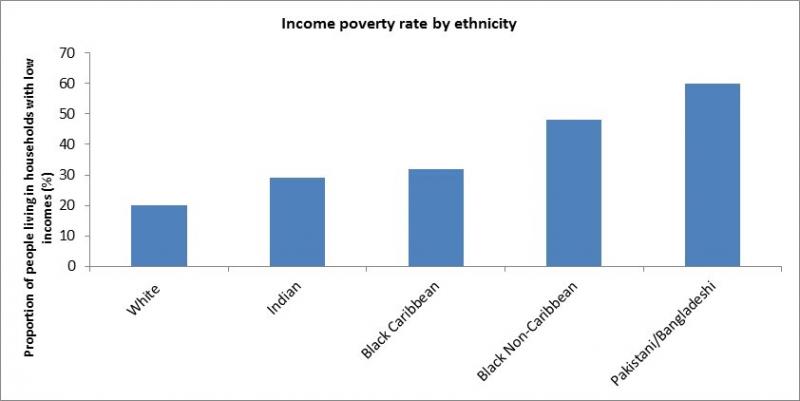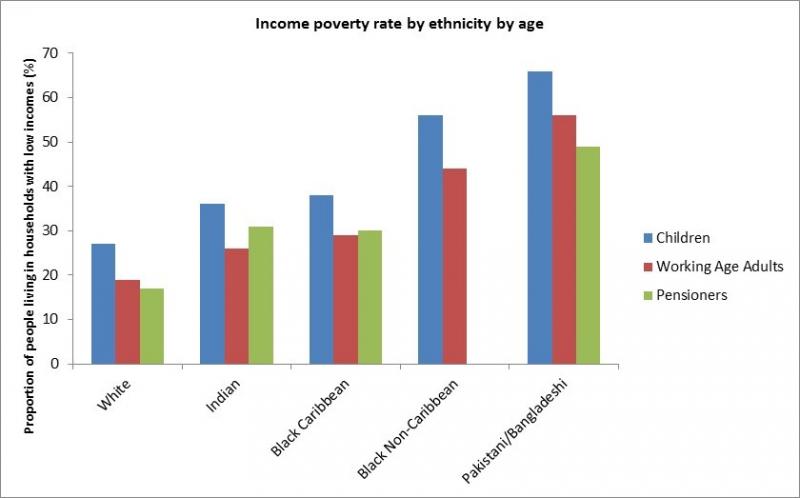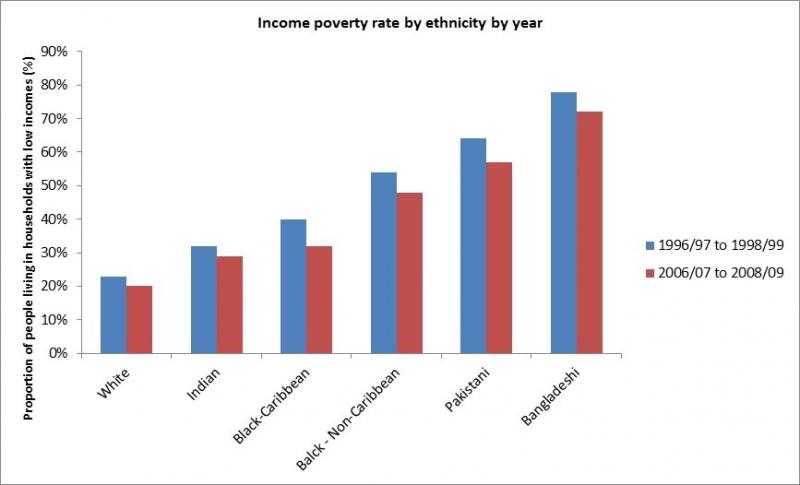Why is poverty important? Because regardless of political orientation, or how one thinks about poverty, it is usually perceived as a problem per se.
This is because the abundance of research which exists on poverty documents the pervasive constraints it places on the lives of those affected. It severely limits the ability of individuals to fulfil their potential and participate in society.
Poverty tends to be associated with groups of people with particular characteristics, in this case ethnicity, which are not related to the ways by which one can potentially avoid low income. This uneven distribution of poverty is perhaps the most compelling indicator of just how unfair it is.
While we only focus on low income here, we know that there are other issues to take into account when measuring poverty, e.g. material deprivation. Nevertheless, since income tends to be essential to achieving an acceptable standard of living in free market societies, it follows that low income serves as a good indicator of overall disadvantage.
Here poverty is measured by calculating whether an individual is living in a household with an income below 60% of the median, which is a very common method.
We know that there are both commonalities and variations in the experience of disadvantage within and between different ethnic groups. Other factors - such as social class, gender, and country of birth - will intersect with ethnicity to produce different outcomes for different groups of people. So disaggregating the effects of ethnicity from those other characteristics is important and will enable us to identify the extent to which ethnic group itself is responsible for disadvantage.
That is not to say ethnicity in and of itself is responsible for disadvantage, but that society is structured in a way that discriminates against people from ethnic minorities.
We must be clear, however, that the scope of this project does not permit a comprehensive account of the breadth and complexity of disadvantage among ethnic groups; it is intended to be illustrative of this discrimination.
The picture of poverty among ethnic groups
The adjacent graph shows rates of income poverty for different ethnic groups in 2008/9.
It clearly indicates that there are greater proportions of people from ethnic minority groups on low incomes than people from the white population.
Black groups have much higher rates of poverty than white people, but Pakistani and Bangladeshi people have the highest rates overall.
There is a quite a large disparity between rates of poverty for different black groups, with Black Non-Caribbean people having much higher levels of poverty than Black Caribbean people. This indicates the importance of not losing sight of differences between ethnic groups.
The graph opposite disaggregates the ethnic populations into age groups.
It indicates that children experience the highest levels of poverty of any age group, but the ethnic stratification is replicated.
21% of all children in poverty are from ethnic minority backgrounds despite making up only around 13% of the population of under 18s.
We can again see that Black Caribbean people avoid poverty to a far greater extent than Black Non-Caribbean people, but people from either ethnic group are still more likely than white people to be in poverty at any age.
The adjacent graph shows the proportion of people from different ethnic backgrounds on low incomes between 1996/1999 and 2006/2009.
It indicates a decline in poverty rates over the decade, but the significant disparities between ethnic groups remain.
People from black ethnic backgrounds have experienced relatively large falls in income poverty over the 10 year period, but this has had a minimal effect on the overall relationship between ethnicity and low income. This suggests that the underlying structural disadvantage that gives rise to these variations has not been addressed adequately.
This brief outline of poverty in the UK has partially highlighted one aspect of myriad disadvantages that people from ethnic minority backgrounds face. Subsequent blogs will build on this, contextualising the criminalisation of black people in a broader landscape of discrimination and disadvantage in order to develop a more sophisticated analysis of the problem. Experiences and outcomes in primary and secondary education will be considered next.



